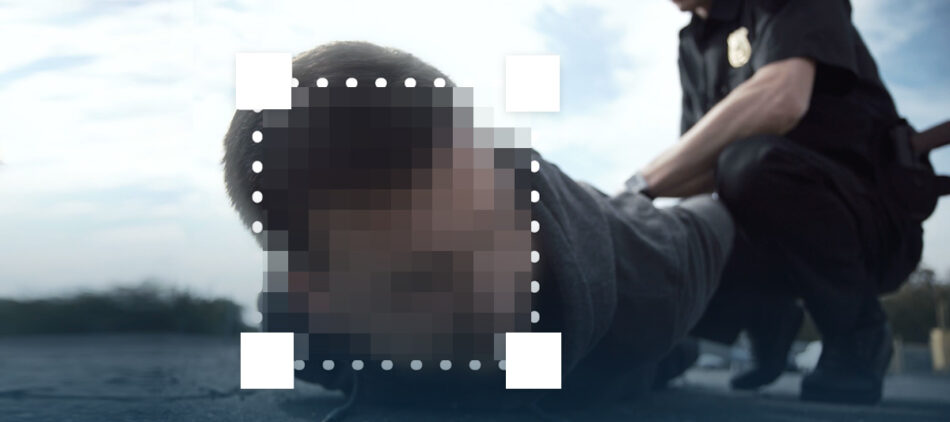
Dispute Over California Disclosure Laws Highlights Redaction Challenges for Law Enforcement
New California laws mandating timely public access to police video and audio communications are heaping massive cost burdens on state agencies, with one department recently warning it will cost more than $350,000 to review and redact its use of force cases. Driving this price tag is the cost associated with the review of video and the subsequent redaction of personally identifiable information contained within it. Agencies require special software typically used by professional video editors and specially trained staff to carefully manually review both the video and audio recordings for sensitive information, such as innocent faces captured by bodycams. However, there’s good news for police agencies, with the arrival of cloud-based artificial intelligence solutions that can dramatically cut the costs of collecting, reviewing and redacting video and audio for public disclosure.
Let’s take a look at the challenges facing California law enforcement agencies and how AI can help allow them to meet the time demands of the new state disclosure legislation while minimizing costs.
The law vs. the laws
California in January moved to the vanguard of the police-transparency debate with the passage of two related bills: SB-748 and SB-1421.
The first bill, SB-748, allows police to withhold a video or audio recording that relates to a critical incident for up to 45 calendar days, and must release the video or audio recording at or before that point, unless doing so would interfere with an ongoing investigation. This includes potentially controversial content, such as bodycam and dashcam video and recordings of 911 calls. The bill also specifies that law enforcement must redact such recordings to protect privacy.
The second bill, SB-1421, defines critical events as incidents that include the discharge of a firearm, great injury or death due to police use-of-force and some cases of suspected sexual assault by officers.
While civil rights advocates cheered the bills, state police associations expressed concerns about their financial burden, the difficulties storing and managing large quantities of content, and a lack of state funding to help them address these challenges. These challenges are expected to grow as the number of requests rises.
The issue quickly came to a head in February, when broadcaster KPBS requested all records from the San Diego County Sheriff’s Department regarding critical events during the past five years. The Sheriff’s Department responded it would need $354,524.22 to cover the cost to review and redact records from the bulk of the cases.
Citing a previous court case that requires requesters to pay the costs of inquiries, the Sheriff’s Department said it would need to charge this fee to KPBS to recoup the expenses. However, KPBS is challenging this assertion, citing a legal expert who noted the case law is under review by the California Supreme Court.
If the case fails to pass the court’s review, it may leave California law enforcement agencies on the hook when it comes to mustering the money and effort required for review and redaction.
California Disclosure Law requires a better approach to redaction
The Sheriff’s Department informed KPBS that it requires costly and specialized equipment and software to redact information from audio and video files. The agency also said it will need to pay an employee to review and extract the requested data at a salary of $33.80 per hour.
Such costs and labor are typical for the conventional, manual-focused redaction techniques commonly used by today’s police forces. Such techniques require extensive manpower and expertise to review each frame and make edits, such as obscuring the faces of witnesses. These procedures are also time-consuming, requiring 10 minutes or longer to redact just one face from one minute of video.
AI technologies provide a powerful alternative to this inefficient workflow, using cognitive-engine algorithms to automatically identify faces, license plates and other personally identifiable information (PII) contained within video and audio content. When used in a redaction solution, these algorithms can place potential PII—such as names of victims in 911 calls, into lists that can be previewed by users. Users then could quickly define which faces need to be redacted and the solution would automatically obscure each time those faces appear in each frame of video.
This approach dramatically cuts down on redaction times compared to manual review and editing workflows, taking minutes to perform tasks that previously consumed countless hours. Such a system also could be utilized effectively by users at all levels of expertise, not requiring extensive training in redaction.
Veritone takes on the redaction challenge
Veritone’s Redact was specifically designed to take on challenges like those faced by California police. Redact enables police agencies to save time and increase productivity by automating the redaction of faces, heads and sensitive imagery in audio and video evidence.
Veritone Redact is an equipment-agnostic, cloud-based solution, enabling users to simply upload video or audio evidence from a local computer or cloud repository. Once uploaded, users open redaction projects for specific evidence files to run automatic face, head or other user-defined detection. This eliminates the need for investment in specialized hardware and software for redaction, allowing police agencies to meet the requirements of California law without incurring major expenses.
Further Reading
AI Body Cam Redaction software becomes Essential for California Police Amid New Body-Cam Legislation
Intelligent, Rapid Discovery of Audio, Video and Text Documents for Legal Teams
Intelligent Digital Evidence Redaction for Judicial and Law Enforcement Agencies
How AI-powered Video and Audio Redaction Helps a New Jersey PD Release Records Faster